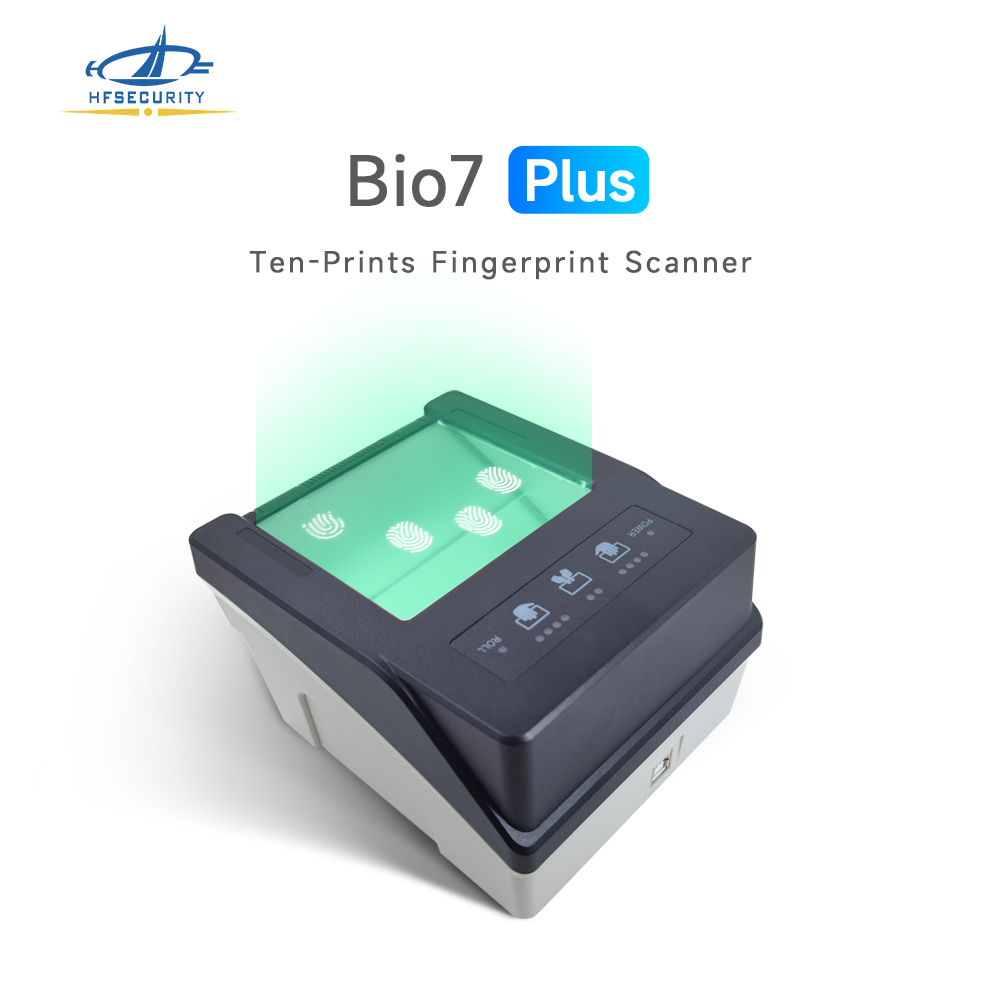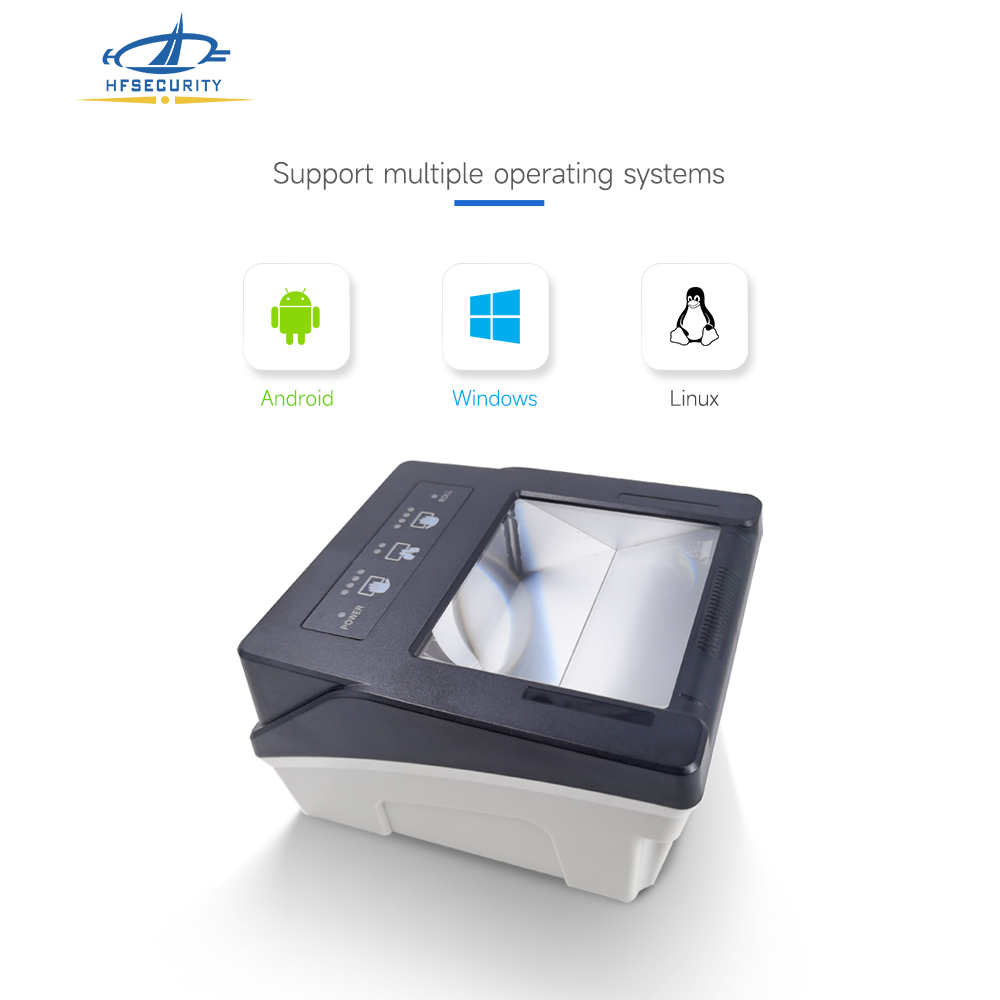A ten fingeprint scanner, also known as a biometric scanner, is a device that captures and stores digital images of fingerprints. Here are some of the important uses of a ten fingerprint scanner:

Security:
One of the most common uses of a ten fingerprint scanner is for security purposes. It is commonly used in access control systems, where it can be used to verify the identity of individuals who are trying to gain access to a secure area or system.
Law enforcement:
Ten fingerprint scanners are commonly used by law enforcement agencies to identify suspects and solve crimes. By matching fingerprints found at a crime scene to a database of fingerprints, investigators can identify suspects and build a case against them.
Identity verification:
Fingerprint scanners are used to verify the identity of individuals in a variety of contexts, such as for banking transactions, voting, and passport applications.
Time and attendance tracking:
Fingerprint scanners can be used to track the attendance of employees, students, or other individuals. By scanning their fingerprints, attendance records can be automatically created, making it easy to track attendance and ensure that individuals are present when they are supposed to be.
Medical records:
Fingerprint scanners can be used to store medical records and provide secure access to them. By scanning a patient’s fingerprint, medical professionals can quickly access their medical history, medications, and other important information.
Overall, the use of ten fingerprint scanners is important for security, law enforcement, identity verification, time and attendance tracking, and medical records management.
In a move towards increased security measures, many businesses and organizations are implementing the use of fingerprint scanner devices to verify employee identities. These devices scan all ten fingers, providing a more comprehensive and accurate identification system than traditional methods such as ID cards or passwords.
Recent reports have shown that the adoption of fingerprint scanner devices has led to a reduction in security breaches and unauthorized access, resulting in increased trust and confidence from both employees and customers.
In addition to increased security measures, the use of fingerprint scanner devices has also led to a more efficient and streamlined system for tracking employee attendance and timekeeping. The devices can quickly and accurately record the time and attendance of each employee, reducing the risk of errors and eliminating the need for manual record-keeping.
Overall, the adoption of ten fingeprint scanner devices has been a positive step towards enhancing security and streamlining processes in the workplace. As more companies recognize the benefits of these devices, we can expect to see widespread adoption across a range of industries and organizations.
what is ten fingerprint scanner
A ten fingerprint scanner is a biometric device that is used to capture and record an individual’s ten fingerprints, which are then used for identification or authentication purposes. The scanner typically consists of a flat surface with a built-in sensor or set of sensors that capture images of the fingers when they are placed on the surface.
ten fingeprint scanner are commonly used in law enforcement, border control, and other security applications to verify the identity of individuals by comparing their fingerprints to a database of known prints. They are also used in some workplaces and other settings to control access to secure areas or equipment.
The use of 442 fingerprint scanners has increased in recent years due to improvements in technology that have made them more accurate and reliable. These devices are often preferred over other biometric technologies such as facial recognition or iris scanning because fingerprints are unique to each individual and do not change over time.

How do I register multiple fingerprints?
The process for registering multiple fingerprints can vary depending on the device or system you are using. Here are some general steps that may help:
- Go to your device’s settings and look for the option to add or manage fingerprints.
- If you have already registered one fingerprint, you may need to select the option to add another fingerprint.
- Follow the instructions to place your finger on the fingerprint sensor or scanner. You may need to adjust your finger slightly to ensure that the sensor can capture all parts of your fingerprint.
- Once the device has successfully captured your fingerprint, you may be asked to repeat the process for each additional finger you want to register.
- After you have registered all of the fingerprints you want to use, make sure to save the changes and exit the settings menu.
Keep in mind that some devices may have a limit on the number of fingerprints you can register. Additionally, if you are having difficulty registering your fingerprints, you may want to try cleaning the sensor or scanner and ensuring that your fingers are dry and free of any moisture or residue.
Top 20 reason use ten fingeprint scanner
- Enhanced Security: ten fingeprint scanner provide an added layer of security as fingerprints are unique to each individual, making it difficult for someone to bypass the security system.
- Convenience: Fingerprint scanners provide quick and easy access to devices, applications, and physical spaces, without the need for passwords or keys.
- Speed: Fingerprint scanners can read fingerprints in a matter of seconds, making them a quick and efficient way of authentication.
- Accuracy: Fingerprint scanners have a high degree of accuracy, making them less prone to errors compared to other authentication methods such as passwords or PINs.
- Non-Transferable: Unlike passwords or keys, fingerprints cannot be transferred to another person, making them more secure.
- Fraud Prevention: ten fingeprint scanner can prevent fraud by ensuring that only authorized individuals can access restricted areas or perform specific actions.
- Reduced Costs: Fingerprint scanners can reduce costs associated with lost or stolen keys or the need for frequent password resets.
- User-Friendly: Fingerprint scanners are easy to use and require minimal training, making them a user-friendly authentication method.
- Customizable: Fingerprint scanners can be customized to match specific security requirements, such as different levels of access for different employees.
- Easy Integration: Fingerprint scanners can be easily integrated with other security systems, making them a seamless part of an overall security strategy.
- Time Tracking: Fingerprint scanners can be used for time tracking, making it easy to keep track of employee attendance and work hours.
- Compliance: Fingerprint scanners can help organizations comply with various regulations and standards related to security and access control.
- Data Protection: Fingerprint scanners can protect sensitive data by ensuring that only authorized individuals can access it.
- Remote Access: Fingerprint scanners can be used for remote access, making it possible to authenticate users from different locations.
- Audit Trail: Fingerprint scanners can provide an audit trail, making it possible to track who accessed what and when.
- Employee Accountability: Fingerprint scanners can improve employee accountability by ensuring that employees are held responsible for their actions.
- Improved Customer Service: Fingerprint scanners can improve customer service by making it easier for employees to access customer information quickly.
- Improved Productivity: Fingerprint scanners can improve productivity by reducing the time and effort required for authentication.
- Health and Safety: ten fingeprint scanner can help ensure health and safety by restricting access to hazardous areas to only authorized individuals.
- Future-Proof: Fingerprint scanners are likely to become more prevalent in the future, making them a future-proof investment for organizations.

Ten print scanners are important applications
Ten-print scanners are highly important applications for capturing and storing biometric data, specifically fingerprints. These scanners use optical or capacitive sensors to create high-quality images of fingerprints, which are then used for identification and verification purposes.
Here are some reasons why ten-print scanners are important:
- Enhancing security: Ten-print scanners are widely used in law enforcement agencies and border control to identify individuals and prevent security threats.
- Preventing identity fraud: Ten-print scanners can help to prevent identity fraud by verifying a person’s identity through their fingerprints, which are unique to each individual.
- Streamlining processes: Ten-print scanners can help to streamline processes such as employee background checks and immigration procedures by eliminating the need for manual identification methods.
- Saving time and resources: Ten-print scanners can help save time and resources by automating the fingerprint capture process, allowing for more efficient identification and verification.
- Ensuring accuracy: Ten-print scanners can capture high-quality images of fingerprints, ensuring accuracy in identification and verification processes.
Overall, ten-print scanners are crucial tools in enhancing security, preventing identity fraud, streamlining processes, saving time and resources, and ensuring accuracy in identification and verification.
Summary ten fingerprint scanner
Ten-print scanners are devices that capture and store biometric data, specifically fingerprints. They use optical or capacitive sensors to create high-quality images of fingerprints, which are unique to each individual. Ten-print scanners are widely used in law enforcement agencies and border control to enhance security, prevent identity fraud, streamline processes, save time and resources, and ensure accuracy in identification and verification processes. Overall, ten-print scanners are important applications for capturing and storing biometric data.

